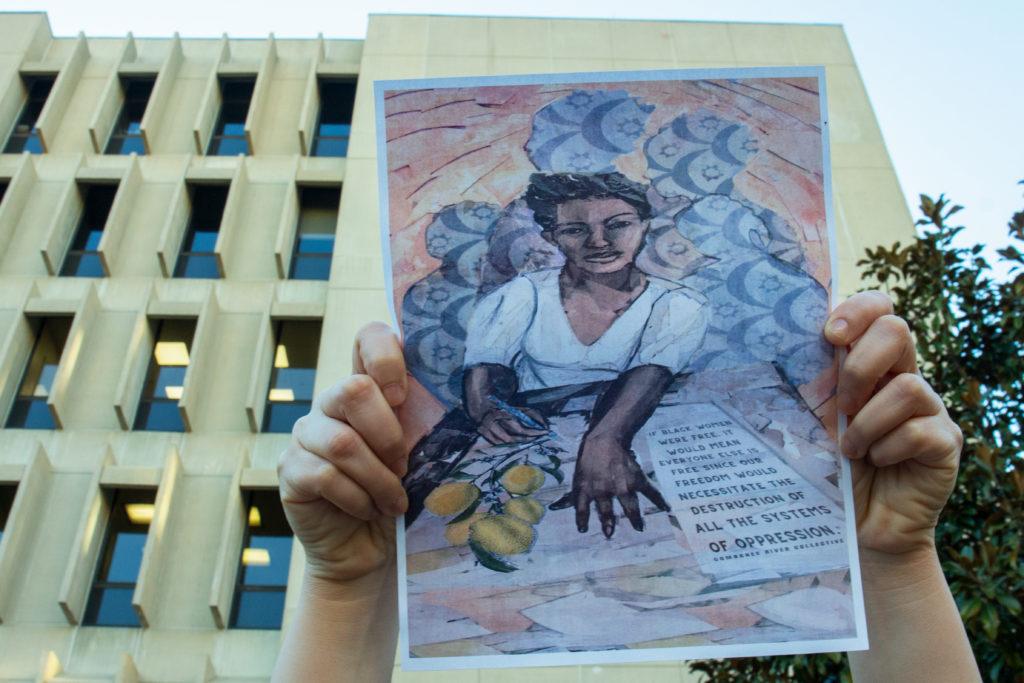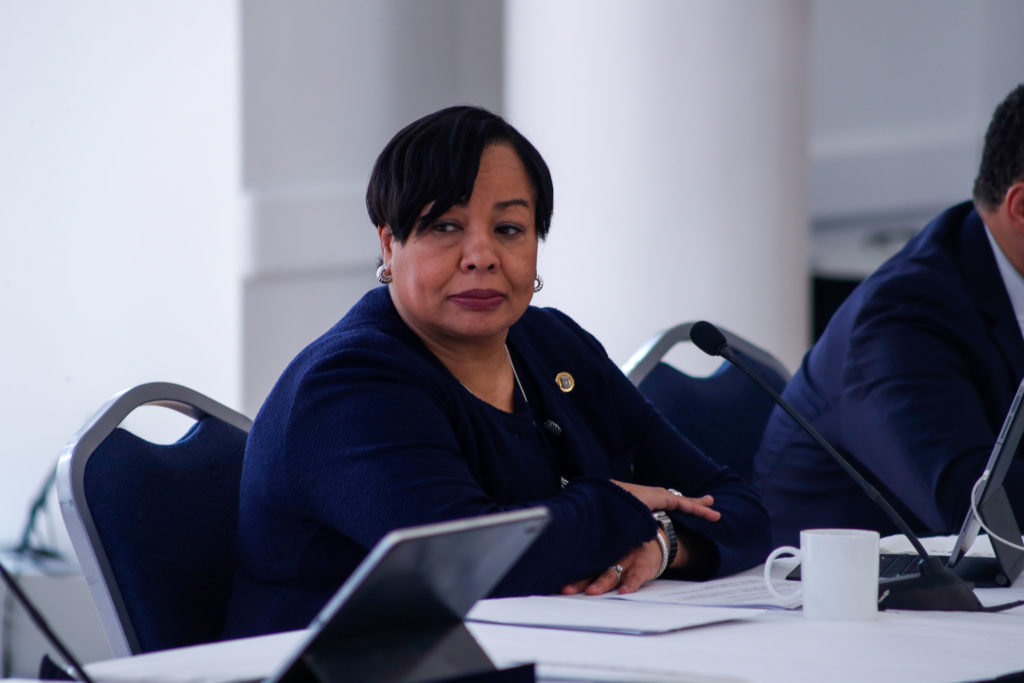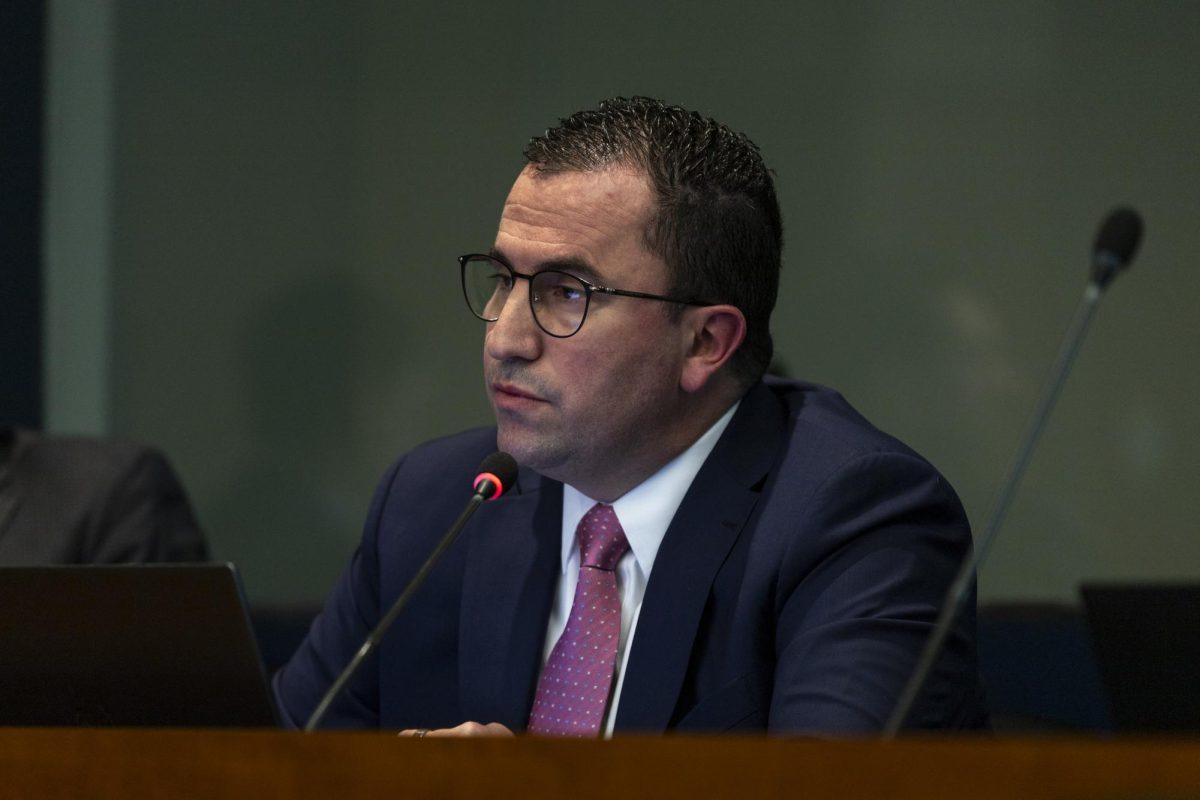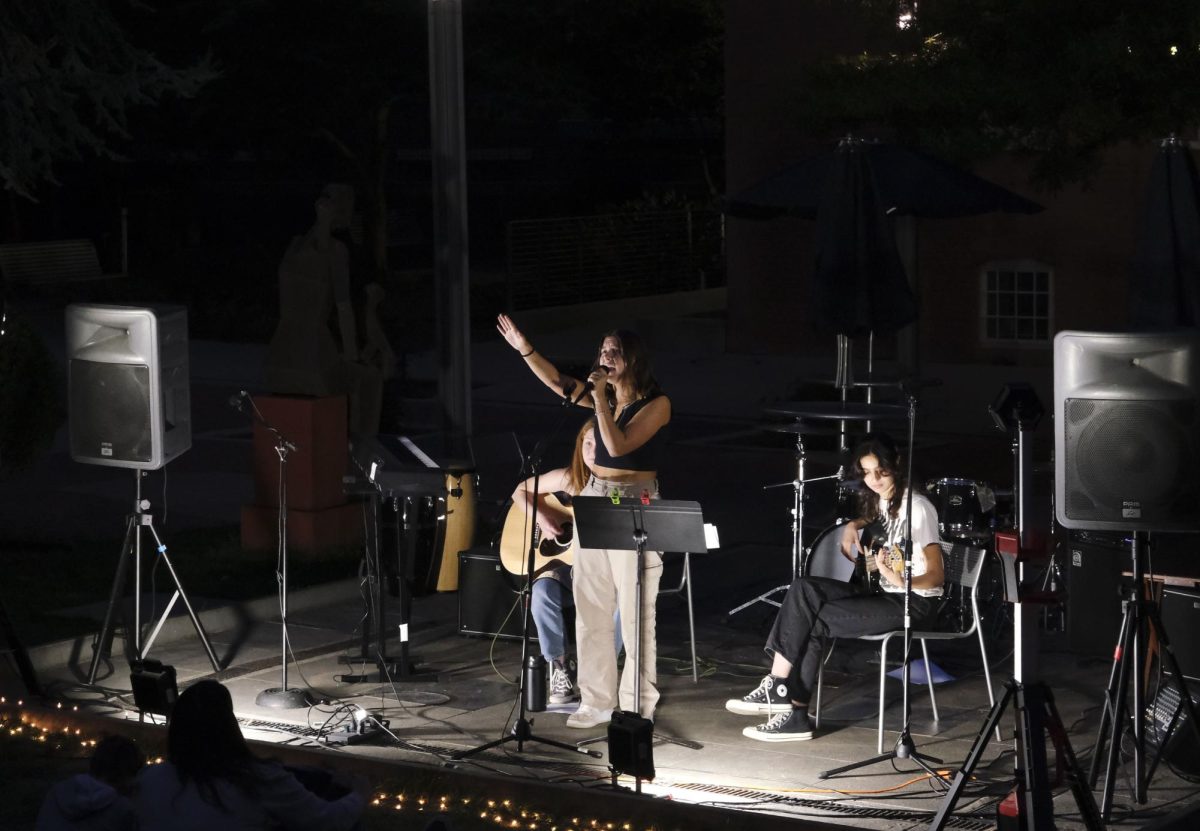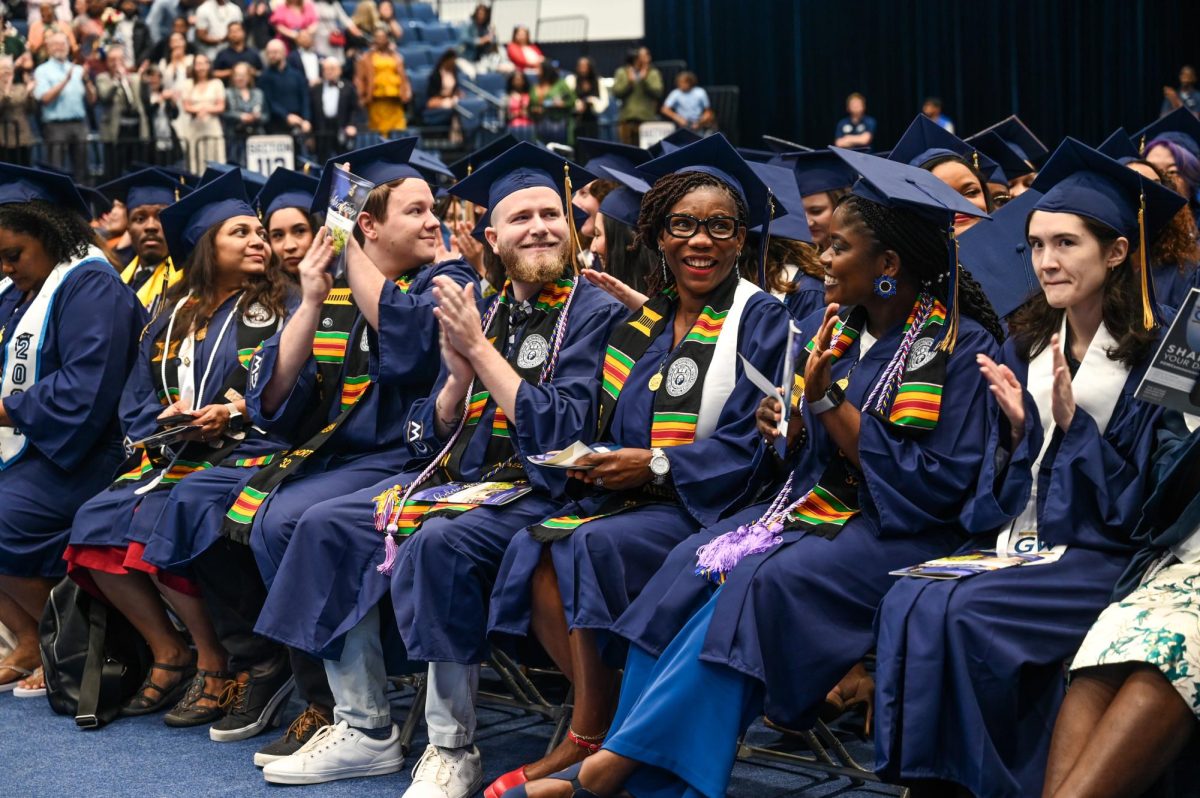Leah Brock McCartney was a woman of firsts.
Amid nationwide racial turmoil in schools in 1954, she became the first Black woman to graduate from GW, was the first woman municipal judge of record in Missouri and in 1977 became the first African American to serve on the Missouri Public Service Commission. GW is slated to memorialize the national legacy of McCartney in a 17-by-34-foot mosaic that will line the eastern wall of Gelman Library and face Kogan Plaza with the help of the mosaic’s organizers and alumni Naseem Haamid and Owen Manning, who aim to fundraise $400,000 for the project.
Haamid and Manning said the Leah Brock McCartney project has raised more than $170,000 of its $400,000 goal as of this month. With the 42 percent of the funds needed to make the mosaic a reality, Haamid and Manning are calling on the GW community to push the project across the finish line.
“Something I want to highlight on the record is 2021 to 2022 academic school year, there were 26,457 students at GW – approximately 12,000 undergraduate students and approximately 15,000 graduate students,” Haamid said. “If you do the math, if each person in that pool was to donate $20 today, we would have a grand total of $529,000. This a call to action upon every single student once this story is released that if everyone donates $20 in the next six months, we will reach this goal.”
Haamid and Manning, who graduated in 2021, kickstarted the mosaic project after taking Black Feminist Theory –Lemons into Lemonade: Black Women in the U.S. in fall 2019 with Jordan West, the associate vice provost of diversity, equity and community engagement. The class required students to create a social action project that memorializes the legacy of a Black woman.
“We did research, and we figured out that there is a building named after the first white woman to graduate from GW, Mabel Thurston,” Haamid said. “So we said ‘boom, let’s figure out the first Black woman to graduate from GW.’ We did research and found out that the first Black woman to graduate from GW was Judge Leah Brock McCartney.”
McCartney enrolled as a student at National University in 1951 to pursue a bachelor of laws degree, the primary law degree in the United States at the time. National University desegregated and merged with GW in 1954, forming what became known as the National Law Center at The George Washington University, where McCartney graduated with the highest GPA of her class despite working full time. In 1968, GW presented McCartney with a Juris Doctor degree in exchange for her bachelor of laws degree, which was phased out as the nation’s primary law practicing degree in the early 1960s.
McCartney was a trailblazer for a generation of Black GW students during a time when then-President Cloyd Heck Marvin reinforced segregation, and GW prohibited Black people from living in dormitories until the 1960s.
The mosaic project stalled following the onset of the COVID-19 pandemic in 2020, but as the pandemic-related restrictions began to subside last year, Manning and Haamid renewed their memorialization efforts.
“I received a call from Owen Manning, and he said it’s time to pick this project back up,” Haamid said.
Manning said Black history plays a major role in ensuring that change happens.
“In order to drive change at the university level and even society at large, we need to understand where we come from and where we’re going, as a people, as a community, as a society in order to advance,” he said.
To back up their project proposal for administrators, including former University President Thomas LeBlanc, who requested certification that McCartney was the first Black alumna, Haamid and Manning worked with University archivists to find evidence in October 2020.
The group found a letter written by McCartney’s husband, Victor A. McCartney, to then-University president of GW Lloyd Hartman Elliot in 1983. He attached a Missouri State Senate resolution with clauses that affirmed McCartney’s role as the first woman municipal judge in the state of Missouri and the first Black member to serve with the Missouri Public Service Commission.
Without this letter, there would be no evidence recording McCartney’s impactful ties to the University, Haamid and Manning said.
“Most people who are the first don’t get to tell their own story publicly or put themselves in books, especially Black women,” West said in an email. “The amount of accomplishments Judge McCartney was able to achieve and doing so in such a humble and selfless way demonstrates and exemplifies so much about Black women.”
After meeting with LeBlanc and other GW administrators for approval in 2021, Haamid and Manning received support from local community members and the University through donations and digital article promotions.
The pair said they want to get more GW community members involved to create a sense of unity and spark community ownership around the mosaic.
“When we pitched it, we pitched it standing firm in our belief that the community at large, GW community, alumni, the D.C. community and ultimately the nation at large would push us across the finish line,” Haamid said.
Haamid and Manning commissioned artist Chanel Compton to create the mosaic out of glass and ceramic tile in Baltimore, Maryland. Compton’s previous work includes a Harriet Tubman mosaic at the National Museum of African American History and Culture and a portrait of Adam Francis Plummer, a former enslaved person from Maryland who kept a daily diary for six decades.
“This mural is going to have a lasting impact for generations and will empower students on campus to learn about the history of Leah Brock McCartney,” Compton said.
Brianna Taylor, a junior studying political science and law and society, said McCartney’s legacy lays a foundation for Black women studying law at GW. A 2019 survey by the Vault and the Minority Corporate Counsel Association found that about 14 percent of newly hired lawyers were women of color. Black lawyers make up about 4.5 percent of lawyers in an 81 percent white and 61.5 percent male-dominated field, according to the American Bar Association.
“To know that Black women in the legal field are here, that we are doing this work in a multitude of different fields of law, but also that we have a sense of power and community on this campus grounded in somebody like Leah Brock McCartney, sets the foundation for us to be at this institution and go into the field that we hope to attain,” Taylor said.


